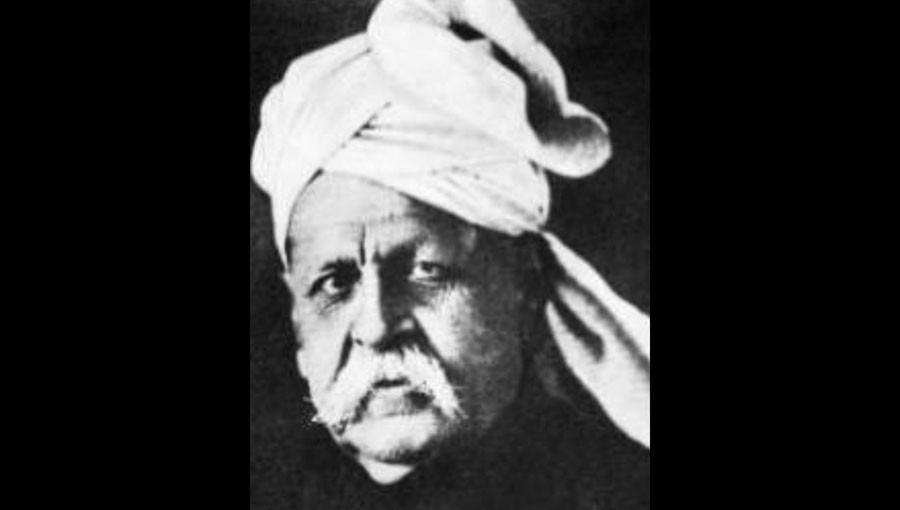
Remembering the enigmatic entrepreneur who ushered in an era of modernisation in Punjab

"Was he the greatest failure or the most successful man of his time? Per chance he was both," said K.L. Gauba, the eldest son Lala Harkishen Lal (1864-1937).
Harkishen saw a phenomenal rise in a relatively short span. But his steep fall immediately afterwards made him the most enigmatic figure in Punjab by the turn of the century.
"The extraordinary exemplification of the contradictory behaviour" can also be an apt description of Harkishen Lal. He spent the best part of his life in a small room of a house as big as a palace. His house, situated on the Queens Road in Lahore, was converted into Fatima Jinnah Medical College after the partition. He lived frugally but entertained lavishly - "he astounded viceroys with brilliance of his conversation, and vicerines with the brilliance of his diamond buttons".
One may surmise here that most people emerging from poverty and destitution that get fame, glory and wealth cease to strike a balance between the two extreme situations. They, in most cases, turn out to be control freaks and narcissism becomes an integral part of their persona. Some of such traits had overtaken Harkishen Lal when he acquired power and pelf in early 20th century.
From one extreme (rise) to the other (fall), his life story reads like a mythological tale. Born in a Khatri household of meagre means in Leiah, now a tehsil of Bhakkar district in West Punjab, Harkishen grew up as a precocious child. His father was a clerk in the deputy commissioner’s office in Multan, who died when Harkishen was only four. His mother had already passed away.
Harkishen and his elder brother Daulat Ram were brought up by their uncle Lala Harjas Rai. Besides his uncle’s support, he helped himself by winning scholarships that paid for his studies.
Harkishen kept on plodding through difficulties, mainly of financial nature, till he made the most momentous journey of his life in 1882 -- to Lahore, for taking admission in the Government College Lahore, the foremost institution to educate Punjabi middle-classes.
He demonstrated brilliance at the College. Mathematics, Economics and Persian were his favourite subjects. He secured second position in the entire province and was awarded the State Scholarship for a three-year course at the University of Cambridge. Renowned economist Alfred Marshall was one of his teachers at Cambridge.
This was around the time when new opportunities were thrown open by the British in Punjab.
For past several centuries, Punjab had Muslim majority, followed by the Sikh rule that weakened the caste system in the province. Resultantly, Punjab was steered clear of the establishment of Brahman supremacy. In that particular socio-economic setup, Khatris were of tremendous significance. Under the British dispensation, the sub-castes of Banias and Aroras were the biggest beneficiaries. While writing about them, a British observer stated: "besides monopolising the trades… they are in the Punjab civil service, and have all the literary work of the province on their hands".
Thus individuals as brilliant as Harkishen capitalised on the situation conducive for climbing up the socio-economic ladder.
He returned to India in 1890, and took up teaching Mathematics at the Government College. At the same time, he taught Persian at the Oriental College. In 1896, he sought assistance from a few friends, one of them being Dyal Singh Majithia, and floated Bharat Insurance Company, the first initiative of its kind by a native Indian.
Nina Puri refers to the motivation that Majithia instilled in him by stating, "appreciating Dyal Singh Majithia’s influence over him, Harkishen Lal whole heartedly sailed into business."
A year before setting up the insurance company in 1895, he had founded the Punjab National Bank. Thus the endeavours to industrialise and commercialise Punjab had started bearing fruits. During the five years, from 1901 to 1906, several companies and financial institutions were set up, attesting to the vision and penchant of Harkishen Lal as an institution builder. Some of these companies were, The Punjab Cotton Press Company Limited, The Peoples Bank of India, Ltd., The Amritsar Bank Limited, The Cawnpore Flour Mills Limited, The Century Flour Mills Limited and various soap factories, brick kilns, saw mills, ice factories and laundries.
Establishing so much in just five years attests to the extraordinary business acumen of Harkishen Lal. It is important to note that it was he who took up the challenge of setting up the Lahore Electric Supply Company -- and Lahore was electrified in 1913 for which he got appreciation from Lieutenant Governor Louis Dane.
Read also: The rise and fall of Harkishen Lal – II
Several commentators on the history of modern Punjab consider this initiative as the most crucial and decisive. It ushered Lahore in particular and Punjab in general to the era of modernisation. It was even more important than the introduction of the railway.
The year 1913 was important for Harkishan Lal. The first and the golden phase of his life concluded then. His struggle to sustain his level of success by the dint of his extraordinary acumen and hard work did not yield the same astonishing results.
(To be concluded)